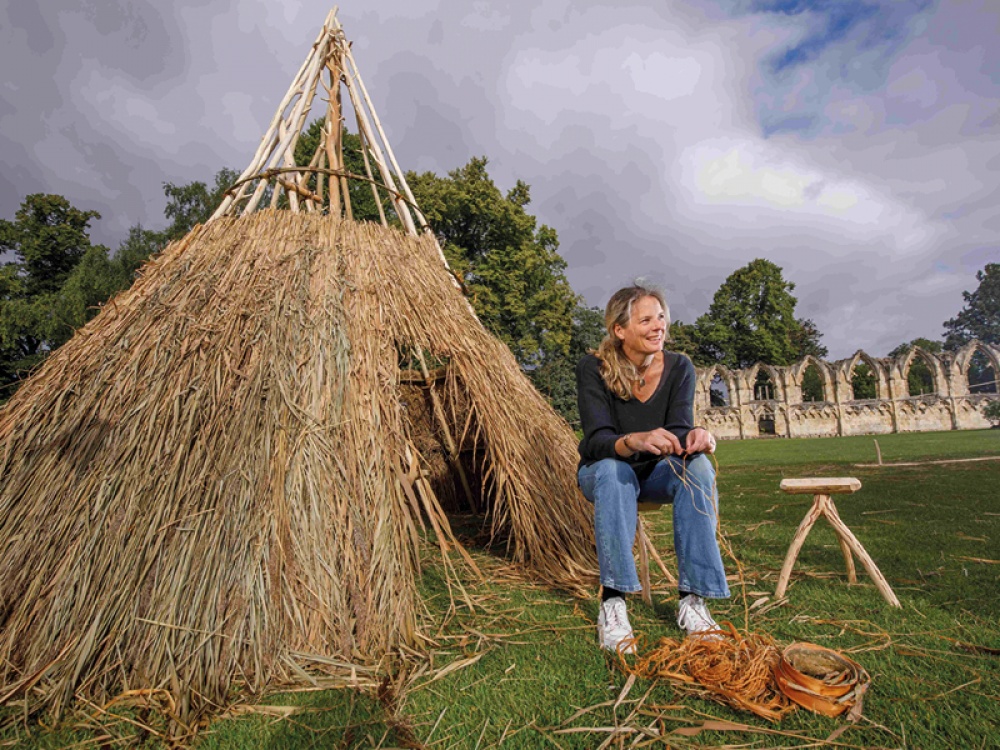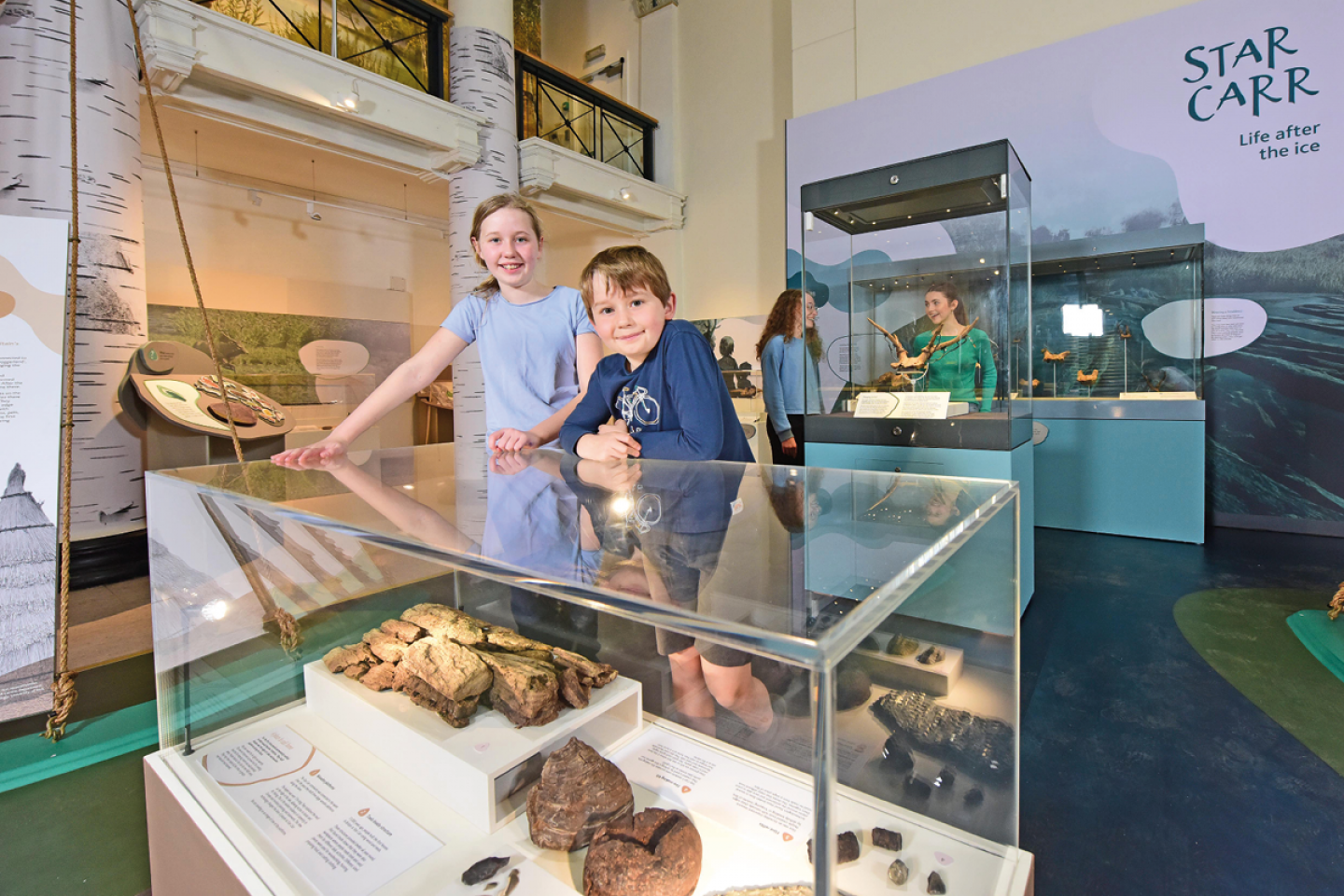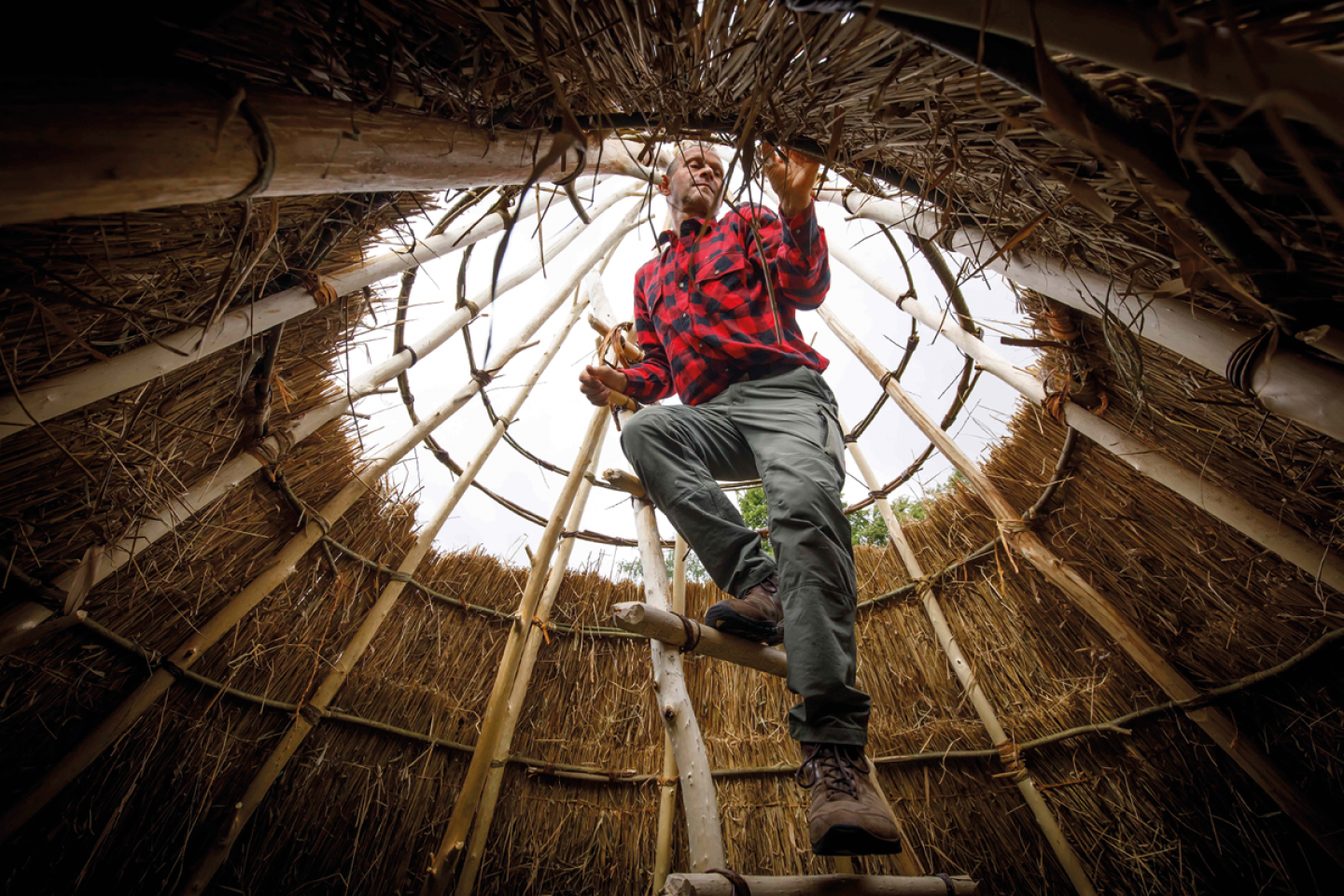Travel Back 11,000 Years in Time With Us

Following the recreation of Britain's oldest house, Living North travel back 11,000 years into the past
excavation at Star Carr is so internationally important.
Star Carr: Life After the Ice opened at Yorkshire Museum this year offering visitors of all ages the chance to discover what life was like 11,000 years ago. The exhibition is interactive and features artefacts from one the most famous Mesolithic sites in the world – Star Carr (around five miles south of Scarborough).
The archaeological site dates to around 9,000 BC, just centuries after the end of the last Ice Age. John Moore, a local amateur archaeologist, found 10 sites in the area and carried out a small excavation at Star Carr in 1948 when flint, bone and antler were found. From 1949 to 1951 he excavated Star Carr and eventually published his findings in 1954. Research wasn’t picked up again until the ‘80s when a trench was excavated about 30 metres to the east of the original works and an unexpected amount of archaeological material was found. The objects now on display in this new exhibition were found during a major archaeological excavation directed by Professor Nicky Milner from the University of York, and the exhibition has been part funded by the university.
‘I was quite surprised when I went to university to find out that a site of such importance was so close to where I’d grown up, but I’d never actually heard about it,’ says Nicky. ‘When we started working at Star Carr we decided to see how much of the local community really knew anything about the site. A very small number of people did. It’s always been a big passion of mine to make sure we’re getting (particularly local) communities understanding and knowing more about this site. I don’t believe that important sites like this should be kept for academics. That history and this period in time belongs to everybody. These are our ancestors. If we want people to understand about our past and our history, it’s important, as archaeologists, that we give everyone the opportunity to find out more.

‘With a site like this, 11,000 years seems like a very long time ago, but I think people are quite often surprised about how sophisticated people actually were in the stone age compared to how they believed they would be. They tend to think of cave men and people saying “ug ug”, that kind of stereotype, but actually these people were building houses, making string and making tools out of flint. They made headdresses and pendants (which all show they’re doing things beyond just surviving). We all descend from that. This is our origin. I think it’s so important that we understand these things and maybe have a different perspective on where we all came from and how things have evolved through time.’
Star Carr: Life After the Ice displays artefacts exploring how prehistoric communities settled, created, cooked and worshipped, and reveals more about the landscape in which these people lived. Objects on display include antler headdresses, a unique, decorated stone pendant and the earliest evidence of carpentry from Europe. ‘What’s nice about the exhibition is that it’s very interactive and there’s lots to look at,’ explains Nicky. ‘There are reconstructions and an interactive digital mural, which sounds a bit complicated but it’s actually a moving scene projected onto the wall of a reconstruction of Star Carr. It’s not a video, it uses gaming technology so it’s always changing. You can sit there and never see the same thing twice. There are people coming and going out of houses and dogs coming past, a rare sighting of a bear, and it goes through day and night and through the seasons in a 20-minute cycle. It takes you back in time to how we imagine life might’ve looked at Star Carr.’
Alongside the exhibition itself, various activities have taken place throughout the summer to engage visitors to York and the museum, including the building of ‘Britain’s oldest house’ in the Museum Gardens. A team from the York Museums Trust and the University of York were joined by experts in ancient technology and archaeology (Diederik Pomstra and Leo Wolterbeek), to build a Mesolithic house using evidence from the excavations – one of the most important discoveries at the site, and the oldest known house in Britain. They used stone tools and plant materials which would have been in use 11,000 years ago.
‘We were all really keen on the idea because I think people do quite enjoy watching something like that happen, and it raises all sorts of questions – “how are you doing it?” and “why are you doing it?”,’ says Nicky. ‘It builds that curiosity which of course we’re interested in as researchers, because we want everyone to be interested in the past like we are.
‘We talked at the beginning about using reeds as thatching around the building because Star Carr was by an ancient lake and there would’ve been lots of reeds. We all learned a technique for making string and that was really fun, and quite addictive actually. Everyone who had a go spent ages making it and we found that, as we got more confident and skilled, we could make it as we were walking around or talking to other people. It opens up more questions about what life was like as a Mesolithic hunter-gatherer, some of the challenges they might’ve faced and some of the ways in which they used the natural materials around them to create a structure like this. We spent five days building it but in that time we were also running demonstrations for the public and talking to people about what we were doing.’
These experimental activities have encouraged more visitors to Yorkshire Museum to engage with the exhibition. ‘Experimental archaeology is the process of taking what you know, recreating what it is under almost laboratory conditions, testing it, and seeing if what you’ve created or done is comparable to the original,’ says Dr Adam Parker, curator of archaeology at York Museums Trust. ‘That’s been very important for understanding Star Carr in addition to some links to ethnographic parallels of current hunter-gather communities – and there’s some wisdom that can be learned from how different people around the world are currently living hunter-gather lifestyles to help interpret some of these objects.

‘For example, one of the objects at Star Carr is the oldest hunting bow in Europe and colleagues at the university were able to identify the type of wood as willow. They know it’s a quarter-split willow trunk and they’ve been able to recreate it in various similar forms and test it in different ways to show how it was used as a tool for hunting. We know the bow that’s on display could probably fire an arrow about 20 metres, but wouldn’t be strong enough to take down big game, so it was probably used in bow fishing. Star Carr was on the edge of a lake and people had an important relationship with the water so doing this experimental archaeology has conjured up an image of people using that bow, standing ankle-deep in water at the edge of the lake trying to catch pike. The building of the house outside is just a further stretch of this same approach.’
Yorkshire Museum holds the archaeological archive for the city of York and the county of North Yorkshire and as a public museum, their collection (which now features finds from the excavation) is also public. ‘The excavations at Star Carr took place at a site of international importance,’ says Adam. ‘We call it a type site because the things we find at the site help us to understand about this entire period of history. There are some slightly comparable finds from other sites on the continent (in Germany and in Denmark), but on the scale of Star Carr? No way! This is genuinely one of the most important sites of this date anywhere in the world. It’s sometimes called “the Stonehenge of the Mesolithic” because it’s so critically important for us in understanding this period. It’s important for us to display this material because this period in prehistory isn’t well-known to the public imagination so there’s really low-hanging fruit for us here to be able to show that this stuff is internationally important.
‘That comes down also to our collaboration with the University of York. Nicky is quite frankly peerless in her international reputation for this period in archaeology. We’ve taken on this archaeological archive which is underpinned by phenomenal archaeological research (the level of detail is unlike anything else we’ve had as an acquisition for Yorkshire Museum). There are plenty of academic papers written about individual objects within the collection and several different monographs explaining about the site and all the objects within it, so what we have is an incredible amount of information from world-class research and these objects that are so important to the history of York and North Yorkshire on display here in York. It’s a marriage made in heaven!’







